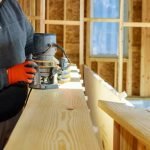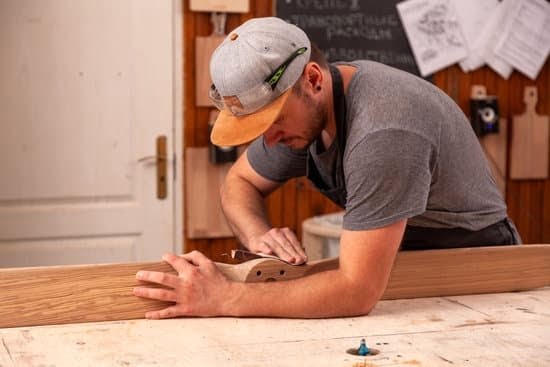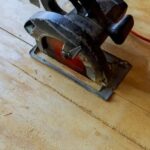Are you struggling with the challenge of removing cooking grease from woodwork? Cooking in the kitchen can often lead to the buildup of stubborn and unsightly grease on your wooden surfaces, causing frustration for many homeowners. In this article, we will explore effective methods for removing cooking grease from woodwork and preventing future buildup.
Cooking grease can easily find its way onto your woodwork, whether it’s the cabinets, doors, or even the walls near the stove. This can not only affect the appearance of your woodwork but also pose a challenge when it comes to cleaning and maintenance. Understanding how to effectively remove cooking grease from woodwork is essential for keeping your home looking clean and well-maintained.
In this comprehensive guide, we will discuss where to look for cooking grease buildup on woodwork, the potential risks of leaving it untreated, as well as the materials needed for successful removal. Whether you are dealing with old grease stains or trying to prevent future buildup, our step-by-step guide will provide you with practical solutions for restoring your woodwork to its former glory.
Let’s dive into the world of removing cooking grease from woodwork and enjoy a healthier and cleaner living space.
Identifying the Affected Areas
When it comes to cleaning woodwork, it’s essential to know where to look for cooking grease buildup. Here are the most common areas where you might find grease on your woodwork:
1. Kitchen cabinets: Grease from cooking can easily splatter onto the surfaces of your kitchen cabinets, especially those located near the stove and oven.
2. Countertops: Wood countertops are also susceptible to grease buildup, particularly around the cooking area.
3. Range hood: The range hood above your stove can accumulate a significant amount of grease over time, which can then drip down onto nearby wood surfaces.
4. Wooden furniture: If you have wooden chairs or tables in your kitchen or dining area, they may also be affected by grease splatters during cooking.
Now that you know where to look for cooking grease buildup on woodwork, it’s important to understand why addressing this issue is crucial for maintaining the beauty and integrity of your wood surfaces.
5. Baseboards and trim: Grease can accumulate on the baseboards and trim near the kitchen area as well, especially if there is a lack of adequate ventilation.
To effectively remove cooking grease from these areas, it’s essential to use the right materials and follow a step-by-step process to ensure that your woodwork remains clean and free from unsightly grease stains.
6. Doors and door frames: In kitchens with wooden doors or door frames, it’s not uncommon for them to become coated in a layer of greasy residue over time.
By taking the time to identify these affected areas and understanding how they can become coated in cooking grease, you’ll be better equipped to tackle this issue head-on and maintain a clean and healthy home environment for you and your family.
The Risks of Leaving Cooking Grease Untreated on Woodwork
Cooking grease can be a stubborn problem when it comes to woodwork in the kitchen. If left untreated, the buildup of cooking grease can lead to a number of risks and issues that can affect both the appearance and longevity of your wood surfaces. It’s important to understand these risks in order to prevent any further damage and maintain the quality of your woodwork.
Here are some potential risks of leaving cooking grease untreated on woodwork:
1. Unsightly Stains: Cooking grease can leave unsightly stains and marks on your woodwork, which can make your kitchen look dirty and unkempt.
2. Damage to the Wood: The oils in cooking grease can seep into the pores of the wood, causing it to become discolored and stained over time. This can lead to irreversible damage if not addressed promptly.
3. Unpleasant Odors: Over time, old cooking grease can give off unpleasant odors that linger in your kitchen. This can affect the overall atmosphere of your home and make it less welcoming for you and your guests.
To avoid these risks, it’s essential to address any cooking grease buildup on your woodwork as soon as possible. By taking proactive measures, you can ensure that your wood surfaces remain in good condition for years to come.
Materials Needed for Removing Cooking Grease From Woodwork
When it comes to removing cooking grease from woodwork, having the right materials is essential for getting the job done effectively. Here’s a list of materials you’ll need before you start working on cleaning your wood surfaces:
Having these materials on hand will allow you to tackle cooking grease buildup on your woodwork with ease, ensuring that you have everything necessary for a successful cleaning process.
Materials Needed for Removing Cooking Grease From Woodwork
When it comes to removing cooking grease from woodwork, having the right materials is crucial for achieving the best results. Grease buildup on woodwork can be a headache to deal with, but with the proper tools and products, you can effectively restore the natural beauty of your wood surfaces.
First and foremost, you will need a mild dish soap or wood cleaner to help break down and lift the grease from the wood. Look for a product that is specifically formulated for use on wood surfaces to ensure that you do not cause any damage during the cleaning process. Additionally, you will need a bucket of warm water for mixing with the cleaning solution.
Another essential material for removing cooking grease from woodwork is a microfiber cloth or sponge. These soft, non-abrasive tools are ideal for gently scrubbing away stubborn grease without leaving scratches or marks on the wood surface. For tougher spots, consider using an old toothbrush to target specific areas and work away at the built-up grease.
Lastly, having some mineral spirits or vinegar on hand can be beneficial for particularly stubborn patches of grease. These products can help to further break down and dissolve the grease before wiping it away. Just be sure to spot test in an inconspicuous area first to ensure that these solutions do not negatively impact your woodwork.
By gathering these materials before starting the cleaning process, you can set yourself up for success in removing cooking grease from woodwork effectively and safely. Remember to always follow product instructions and take necessary precautions to protect yourself and your surroundings during the cleaning process.
Step-by-Step Guide on Removing Cooking Grease From Woodwork
Cooking grease buildup on woodwork can be a common problem in many households, especially in the kitchen. It not only looks unsightly but can also lead to permanent damage if left untreated. Fortunately, there are effective ways to remove cooking grease from woodwork without causing any harm to the surface.
The first step in removing cooking grease from woodwork is to gather the necessary materials. You will need dish soap, warm water, a soft cloth or sponge, baking soda, white vinegar, and olive oil. These gentle yet effective cleaning agents will help lift and dissolve the grease without damaging the wood.
Once you have all the materials ready, start by mixing a few drops of dish soap with warm water. Dampen a soft cloth or sponge with the soapy water and gently scrub the affected area. Be sure not to use excessive force as this may scratch the wood surface.
For stubborn grease spots, make a paste of baking soda and white vinegar and apply it directly to the affected area. Let it sit for a few minutes before wiping it away with a clean, damp cloth.
As an additional step, you can also use olive oil to condition and protect the wood after removing the cooking grease. Simply apply a small amount of olive oil to a clean cloth and rub it into the wood in circular motions. This will help restore moisture and shine to the wood while adding a layer of protection against future grease buildup.
| Materials Needed | Step-by-Step Instructions |
|---|---|
| Dish soap | Mix with warm water and scrub affected area |
| Baking soda | Create paste with white vinegar for stubborn grease spots |
| White vinegar | Mix with baking soda for spot treatment |
| Olive oil | Apply to clean cloth and rub into wood for conditioning and protection |
Preventing Future Buildup of Cooking Grease on Woodwork
Cooking grease can easily build up on woodwork, leaving unsightly stains and potentially damaging the surface. In this section, we will discuss effective ways to prevent future buildup of cooking grease on woodwork to maintain a clean and healthy home environment.
Regular Cleaning and Maintenance
One of the most important steps in preventing cooking grease buildup on woodwork is regular cleaning and maintenance. This involves wiping down the woodwork regularly with a mild detergent or wood cleaner to remove any grease or grime that may have accumulated. Additionally, it is important to dry the woodwork thoroughly after cleaning to prevent moisture from getting trapped and causing further damage.
Use Protective Coatings
Another effective way to prevent cooking grease from staining and damaging woodwork is by applying protective coatings. Sealants, varnishes, or polyurethane coatings can be applied to the wood surface to create a protective barrier against grease and other contaminants. These coatings not only make it easier to clean off any spills or splatters but also provide an added layer of protection against potential damage.
Establishing Good Kitchen Habits
Preventing future buildup of cooking grease on woodwork also involves establishing good kitchen habits. Using splatter guards while cooking, covering pots and pans when frying, and regularly cleaning kitchen surfaces can help minimize the amount of grease that ends up on the woodwork. Additionally, using exhaust fans while cooking can help reduce the spread of cooking grease in the kitchen area.
By implementing these preventive measures, homeowners can effectively reduce the risk of cooking grease buildup on their woodwork, preserving the appearance and integrity of their wooden surfaces for years to come.
Alternative Methods for Removing Cooking Grease From Woodwork
There are several methods for removing cooking grease from woodwork, and not all of them involve harsh chemicals. If you prefer a more natural approach, there are some alternative methods you can try that are just as effective.
Vinegar and Water Solution
One of the most popular natural methods for removing cooking grease from woodwork is using a solution of vinegar and water. Mix equal parts of white vinegar and water in a spray bottle, then spray the solution onto the affected areas. Let it sit for a few minutes, then wipe it off with a clean cloth or sponge. The acidity of the vinegar helps to cut through the grease buildup, making it easier to remove.
Baking Soda Paste
Another natural alternative is to use a baking soda paste to tackle stubborn cooking grease on woodwork. Make a paste by mixing baking soda with a small amount of water until it forms a thick consistency. Apply the paste to the affected areas, then gently scrub with a sponge or soft-bristled brush. The abrasiveness of the baking soda helps to lift and remove the grease from the wood without causing any damage.
Citrus-Based Cleaner
If you prefer using commercially available products, look for citrus-based cleaners that are specifically formulated to cut through grease and grime. These cleaners often contain natural citrus oils that work effectively at breaking down cooking grease on woodwork without leaving behind any residue or strong chemical odors.
By utilizing these alternative methods, you can effectively remove cooking grease from woodwork while minimizing exposure to harsh chemicals and keeping your home environment healthier overall.
Conclusion
In conclusion, it is crucial to address the issue of cooking grease buildup on woodwork in order to maintain a clean and healthy home environment. As discussed in this guide, cooking grease can be unsightly and pose risks to the integrity of woodwork if left untreated. However, by understanding where to look for grease buildup, using the right materials, and following a step-by-step guide, it is possible to effectively remove cooking grease from woodwork.
By taking proactive measures to prevent future buildup of cooking grease on woodwork, homeowners can ensure that their living spaces remain clean and free from potentially harmful substances. This includes regular cleaning and maintenance as well as using alternative methods such as natural cleaners or professional services when needed. Ultimately, by maintaining clean and grease-free woodwork, individuals can create a healthier home environment for themselves and their families.
In summary, removing cooking grease from woodwork may seem like a daunting task, but with the right approach and techniques, it is entirely achievable. By following the steps outlined in this guide and staying proactive about preventing future buildup, homeowners can enjoy beautiful and pristine woodwork throughout their homes for years to come.
Frequently Asked Questions
How Do You Get Cooking Grease Off Wood?
To remove cooking grease from wood, start by blotting up as much of the grease as possible with paper towels. Then, sprinkle baking soda on the affected area and let it sit for a few minutes before wiping it away with a damp cloth.
Does Vinegar Remove Grease From Wood?
Vinegar is a great natural cleaner for removing grease from wood surfaces. Mix equal parts vinegar and water, then use a soft cloth to gently scrub the affected area. The acidity of the vinegar helps to break down and lift the grease from the wood.
How Do You Get Grease Stains Out of Wood?
Getting grease stains out of wood can be done with a simple mixture of dish soap and warm water. Dip a cloth into the soapy water, wring out any excess liquid, then gently scrub the stained area. Rinse the cloth with clean water and wipe away any soapy residue before allowing the wood to dry completely.

Hi everyone! I’m a woodworker and blogger, and this is my woodworking blog. In my blog, I share tips and tricks for woodworkers of all skill levels, as well as project ideas that you can try yourself.





